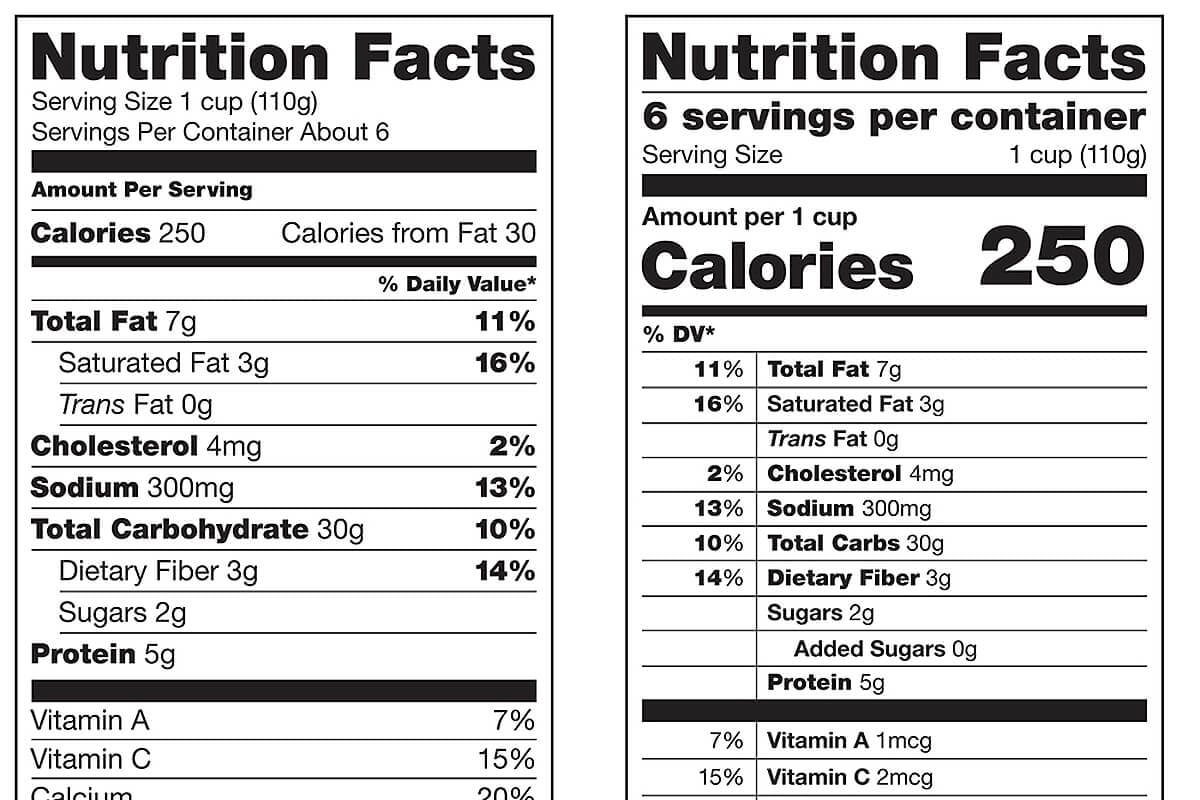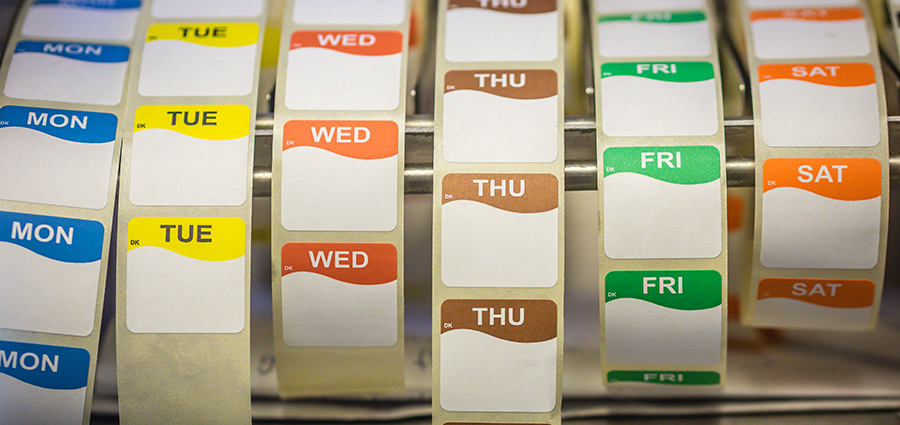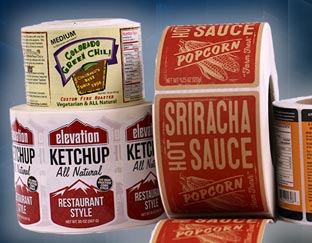39 dv on food labels
Use food labels - Canada's Food Guide Oct 14, 2020 · On this page Benefits of using food labels Changes to food labels How to use food labels Benefits of using food labels Food labels provide information you can use to make informed choices about foods and drinks at the grocery store and at home. ... certain nutrients and % daily values (% DV). The % DV can be used as a guide to show you if the ... What does percent Daily Value (DV) on food labels mean? A food item with a 5 percent DV means 5 percent of the amount of fat that a person consuming 2,000 calories per day would eat. Remember, percent DVs are for the entire day -- not just for one meal or snack. You may need more or less than 2,000 calories per day. For some nutrients you may need more or less than 100 percent DV. SecondsCount.org
How to Read a Nutrition Label: The Path to More Empowered Eating Choices Nutrition and Percent Daily Value (DV) Remember that companies must disclose what their food provides you in nutrients. To figure this out, multiply the number of servings you consumed (or plan to consume) by the calories and grams of fat, sodium, sugar, and carbohydrates provided on the food label.

Dv on food labels
How to Calculate Percentage DV for a Nutrient - SF Gate Divide the given amount of the nutrient by the appropriate recommended daily value found on the FDA guide. So if your item contains 300 milligrams of calcium per serving, divide 300 by 1,000, which... What Does "% Daily Value" Mean on a Food or Supplement Label? The 100% Daily Value is more than what most people consume. The 100% Daily Value amount is a goal, an encouragement to increase the intake of each of these nutrients. Nutrients to limit: These are total fat, saturated fat, trans fat, cholesterol, and sodium. For these nutrients, the 100% DV is an approximate upper limit of safe consumption. Food Labeling Guide - FDA 4. table of contents 1. i ntroduction 4 2. b ackground 4 3. g eneral f ood l abeling r equirements 5 n ame of f ood 7 juices 5. n et q uantity of c ontents s tatements 14 6. i ngredient l ists 17 ...
Dv on food labels. Percent daily value - Canada.ca The % DV is found on the right-hand side of a nutrition facts table. It is a guide to help you make informed food choices. It shows you if the serving size has a little or a lot of a nutrient: 5% DV or less is a little 15% DV or more is a lot This applies to all nutrients with a % DV. Understanding food labels - Canada.ca Food labels, nutrition facts tables, serving size, ingredients, % daily value, nutrition claims. Services and information. Nutrition facts tables. How to use, what is in them, foods that don't have a nutrition facts table. Serving size. How to use the serving size on nutrition facts tables. The Lows and Highs of Percent Daily Value on the Label 5% DV or less of a nutrient per serving is considered low. 20% DV or more of a nutrient per serving is considered high. More often, choose foods that are: Higher in dietary fiber, vitamin D,... Food Labeling & Nutrition | FDA Food labeling is required for most prepared foods, such as breads, cereals, canned and frozen foods, snacks, desserts, drinks, etc. Nutrition labeling for raw produce (fruits and vegetables) and...
Understanding Food Labels in Canada - Unlock Food The percent daily value (% DV) shows you if a food has a little or a lot of a nutrient. ... The % DV is meant to act as a benchmark to determine if that food is ... FDA Food Label Nutrients Without a DV - Weight Loss Center This is because it hasn't established any specific guidelines about how much a person can consume for optimal health. Food manufacturers are required to give a percentage of the daily value for protein if a product is labeled as being high in protein, or if it's specifically made for children or infants under the age of four. Avoid These... What is the difference between the RDA and the DV for vitamins and ... The DVs (Daily Values) are set by the FDA. On food and supplement labels, you will find the "%DV" listed for vitamins and minerals which are required by law to be listed. Why is organic food more expensive than conventional food? Non-certified organic food. In many developing countries, there are agricultural systems that fully meet the requirements of organic agriculture but which are not certified. Non-certified organic agriculture refers to organic agricultural practices by intent and not by default; this excludes non-sustainable systems which do not use synthetic ...
Your Guide to the New Food Label | National Kidney Foundation Fat and cholesterol. Many people with kidney disease are on low fat and low cholesterol diets, so be sure to look at the fat and cholesterol daily values. Look for: foods with less than 10% daily value of saturated fat. foods with less than 7% daily value of cholesterol. lean or extra-lean meat with 7.5 to 15% daily value of total fat. Food Labels | CDC All the numbers on this label are for a 2/3-cup serving. This package has 8 servings. If you eat the whole thing, you are eating 8 times the amount of calories, carbs, fat, etc., shown on the label. Total Carbohydrate shows you types of carbs in the food, including sugar and fiber. Choose foods with more fiber, vitamins, and minerals. The Complete Guide to Recommended Daily Intakes, Daily Values, and ... The Daily Value (DV) builds on the RDI, but creates a number meant for everyone that can be put on the labels of food products. In short, the RDI is more specific and the DV is more general. If you are confused, don't worry, this article will clarify it for you, and give you a table with all the numbers. A Guide to Reading Food Labels - University of Rochester Feb 27, 2013 · Understanding the Percent Daily Values (% DV) on a food label can help you choose foods high in good nutrients and low in bad nutrients. The % DV is based on a 2,000-calorie diet. If you eat less than 2,000 calories a day, your daily value may be lower than what is listed on the label. If you eat more than 2,000 calories a day, your daily value
Percentage of Daily Values Based on a 2000 Calorie Diet Sodium. You can also use the food label to help you limit your intake of sodium. The percent daily value for sodium on a 2,000-calorie diet is based on 2,400 mg of sodium a day. High intakes of sodium can increase your risk of high blood pressure. A food item containing 5 percent or less of your daily value is considered low in that nutrient.
Understanding Food Labels | The Nutrition Source | Harvard T.H. Chan ... The information on food labels is intended to help consumers become savvy about their food choices. The front, back, and sides of a package are filled with information to inform us what the food contains and to provide guidance in making healthier selections of processed foods. ... 5% DV or less of a nutrient per serving is considered low. If ...
How To Read Food and Beverage Labels | National Institute on Aging Feb 24, 2022 · Reading food labels can help you make smart food choices. Learn how to read and understand the product date, ingredient list, and Nutrition Facts label. ... If a food has 5% DV or less of a nutrient per serving, it is considered low in that nutrient. If it has 20% DV or more of a nutrient per serving, it is considered high in that nutrient.
FDA Rounding Rules for Your Food Label - LabelCalc Less than 0.5 grams, round down to 0 (i.e. 0.48 becomes 0). Between 0.5 and 5 grams, round to the nearest half gram (i.e. 4.38 rounds to 4.5). 5 grams and above, round to the nearest whole gram (i.e. 78.73 rounds to 79). * Note that cholesterol is rounded the same way, but the unit is milligrams rather than grams.
Daily Value on the New Nutrition and Supplement Facts Labels Feb 25, 2022 · For example, if the DV for a certain nutrient is 300 micrograms (mcg) and a packaged food or supplement has 30 mcg in one serving, the %DV for that nutrient in a serving of the product would be 10%.
Food Labeling Requirements - LabelCalc Plugging in our numbers would result in approximately a 13% daily value percentage of Vitamin D expressed in mcg for correct food label formatting: % DV = (2.5 mcg ÷ 20 mcg) × 100 = 13%. Vitamin E. As I'm sure you can guess, Vitamin E and it's various forms were also previously expressed in international units on a food label.
What does %DV, "Good Source" & "High Source" mean? Simply put, the daily value (which is not listed on nutrition labels) is the amount of each nutrient that an average person (above age 4) needs for basic health—assuming the average person also requires about 2,000 calories per day. The percentage shows the amount of the DV that the food provides per serving.
How to Understand and Use the Nutrition Facts Label | FDA 5% DV or less of a nutrient per serving is considered low 20% DV or more of a nutrient per serving is considered high More often, choose foods that are: Higher in %DV for Dietary Fiber, Vitamin D,...
How to Calculate % of Daily Value on Food Labels | livestrong Step 1 Find the nutrient amount on the food label. Step 2 Look up the total daily recommended amount in the USDA Dietary Guidelines. Step 3 Divide the nutrient amount by the total daily recommended value. Step 4 Multiply by 100. Things You'll Need United States Department of Agriculture (USDA) Dietary Guidelines Food label Calculator Tip
ESHA Incorporates New FDA Nutrition Facts Labels Into Genesis R&D Food Formulation & Labeling ...
Daily Value: Definition and How to Calculate It - Insider Divide the amount of a nutrient in a food by the value determined in the above formula. Multiply that number by 100 to convert to a percentage. For example: Let's say you follow a 1,500 calorie diet and have determined that your daily value for protein is 37.5 grams. If you eat a serving of peanut butter with 8 grams of protein per serving and ...
Understanding Food Nutrition Labels | American Heart Association 5 - Understand % Daily Value. The % Daily Value (DV) tells you the percentage of each nutrient in a single serving, in terms of the daily recommended amount. ... When the Nutrition Facts label says a food contains "0 g" of trans fat, but includes "partially hydrogenated oil" in the ingredient list, it means the food contains some trans ...
What Is the Difference Between DRI & Daily Value? - SF Gate This number, called the daily value or DV, is based on the amount of each nutrient needed for a 2,000-calorie-a-day diet. You won't find the daily value on the nutrition facts label. Instead, it's...
Food Labels Flashcards | Quizlet Most Americans over the age of 4 are doing fine on protein % DV for protein will only be listed if the food is being marketed to children under 4 years old or if a claim is made about the food ("high in protein") what do the %DV mean <5% DV = low source 10-19%= good source ≥20% = high, excellent, rich source descriptive terms for food labels

Dv On Food Labels : What are traffic light food labels and is it compulsory to ... : In 2016 ...
The Basics of the Nutrition Facts Label Mar 04, 2022 · Percent DV are for the entire day, not just one meal or snack. Daily Values are average levels of nutrients based on a person who eats 2,000 calories a day. A food item with a 5% DV of fat provides 5% of the total fat that a person who needs 2,000 calories a day should eat. You may need more or less than 2,000 calories per day.
Home | Dietary Supplement Label Database (DSLD) | NIH Office of Dietary ... Products in the DSLD are Classified by 10 Product Types Use the chart to learn how many products of each type are in the DSLD. To search by a specific type, click on the product type below. 0 10,000 20,000 30,000 40,000 50,000 Number of Labels Other Combinations Botanical Non-Nutrient/Non-Botanical Vitamin Botanicals with Nutrients










Post a Comment for "39 dv on food labels"